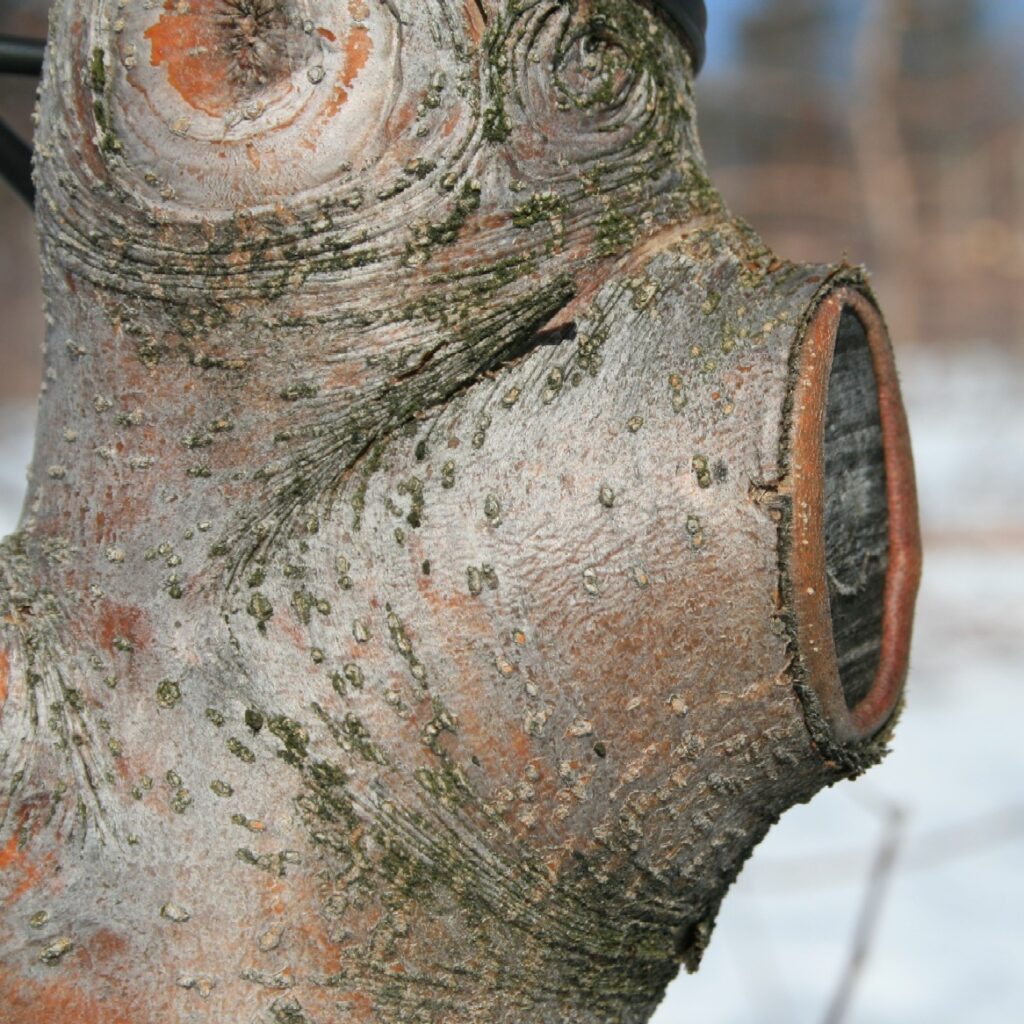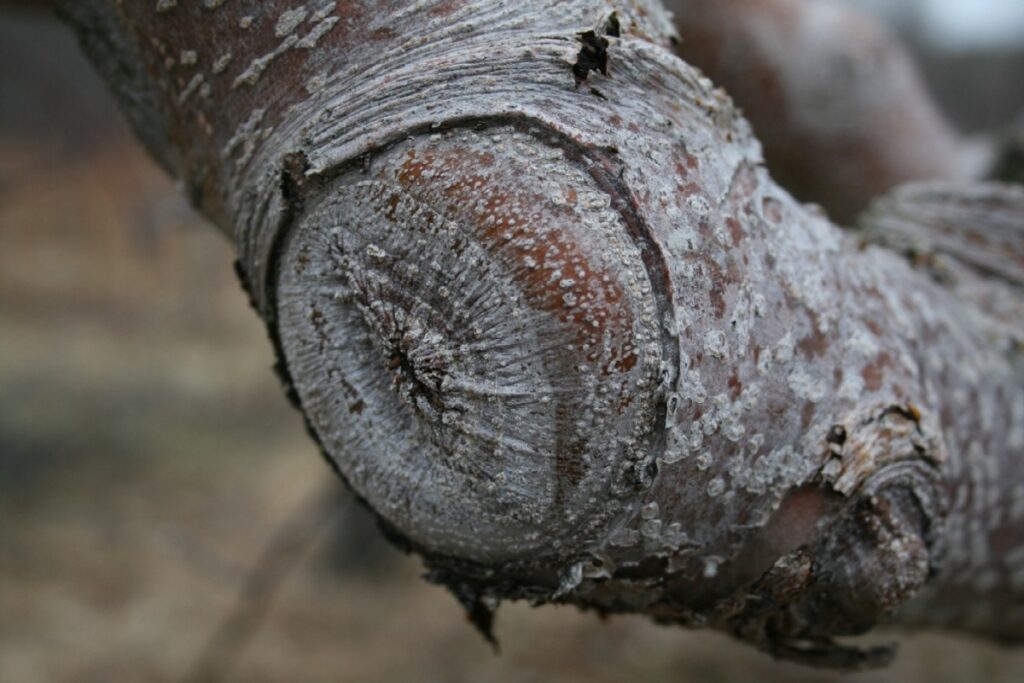Growing Fruits: Care of Mature Backyard Apple Trees [fact sheet]
From Grapevine, Winter 2014
Excerpted from:
https://extension.unh.edu/resource/growing-fruits-care-mature-backyard-apple-trees-fact-sheet
Introduction
Backyard apple trees can be valued additions to the home garden, offering fresh, flavorful and healthful fruit, summer shade and the beauty and aroma of spring blossoms. To get these results, home growers must pay careful attention to pruning, pest management, tree nutrition and other cultural practices.
Pruning
No single cultural technique is more challenging to many home gardeners than pruning. The key to pruning is to understand the basic principles of pruning and adapt them to each tree.
Pruning reduces tree size. Although pruning stimulates shoot growth, especially near the sites where pruning cuts are made; the overall effect is to reduce total tree size. Leaves are the food-manufacturing organs of the tree and eliminating a portion of them (by removing the vegetative buds that will grow come spring) will reduce the total amount of growth the tree makes.
Pruning effects are localized. Strong shoots with large leaves tend to arise at or near the site of pruning cuts.
Pruning does not alter the natural habit of the tree. Certain varieties such as Red Delicious and Macoun have a very upright growth habit that cannot be changed to a more spreading habit by pruning.
Excessive pruning has adverse effects. Severe pruning upsets the tree’s balance. It will result in over-stimulating the growth of water sprouts (suckers), cause a loss of fruit color and delay fruit maturity. It is usually best to prune lightly to moderately every year.
Make clean cuts at the outer edge of the branch collars. Pruning wounds on healthy trees usually heal over in 1 to 2 years as the result of the tree’s natural healing process. Eventually, living tissue (normal bark and sapwood) will completely cover the wound. Rapid wound healing reduces the chance of invasion by rot-causing organisms. Clean cuts made at the outer edge of the collar that forms
where the branch joins the parent limb will minimize healing time.
Narrow-angled crotches are weak. Narrow crotches are weak due to the inclusion of bark between them as the limbs grow. Branches with narrow crotch angles will often “split out” when they become heavy with fruit or snow and ice loads. In addition, the tissues in narrow crotches harden slowly in the fall and may be more susceptible to winter injury, rot organisms and cankers.
Late, dormant season pruning is best. The ideal time to prune apple trees is between February and April. Avoid fall or early winter pruning, which increases the risk of severe winter injury to the trees.
Wound dressings. Pruning wounds require no special treatment if the cuts were made at the outer edge of the branch collar.
Pruning Bearing Apple Trees
Applying these basic pruning principles to your mature (bearing) backyard apple tree is the next step. The following guidelines may make the job easier.
- First, remove all broken, dead or diseased branches.
- If trees are too tall for spraying and harvesting, reduce the height by cutting the main upright growing branches back to a well-developed horizontal lateral.
- Remove all water sprouts (fast-growing, upright branches) and branches that cross and rub other branches.
- Prune to leave branches that are nearly, but not quite flat, eliminating those that hang down or grow upright.
- Eliminate branches that make narrow crotch angles to eliminate splitting or breaking under crop load stress.
- Prune more heavily in the upper part of the tree than the lower. Reducing the spread of the upper limbs will allow more sunlight to reach the lower limbs and help remain fruitful.
- When reducing branch length, make thinning rather than heading cuts. Thinning cuts (removing branches completely) reduce competition between limbs for space and light, enabling better light and spray penetration. Heading cuts (cutting back a branch to just above a bud or side branch) often stimulate vigorous unrestricted growth immediately below the pruning cut.
- Prune moderately each year and do not remove a branch unless there is a good reason for doing so.

the “collar” present where the branch
joined the parent limb.
Photo: William Lord

just 2 years after proper cut was made.
Photo: W. Lord
Bringing Back Large, Old, Abandoned Apple Trees
The same basic rules are followed as with younger, bearing apple trees.
- Dead, diseased, and broken limbs are removed first. For old, neglected trees, this might be all the pruning cuts you make in the first year.
- Water sprouts (shoots growing straight up off lateral branches) are removed next.
- Whole branches are removed to allow light penetration into the canopy of the tree, focusing most of the branch removal activity in the upper half of the tree canopy.
- Suckers that grow during the summer following this pruning should be removed about August 1st.